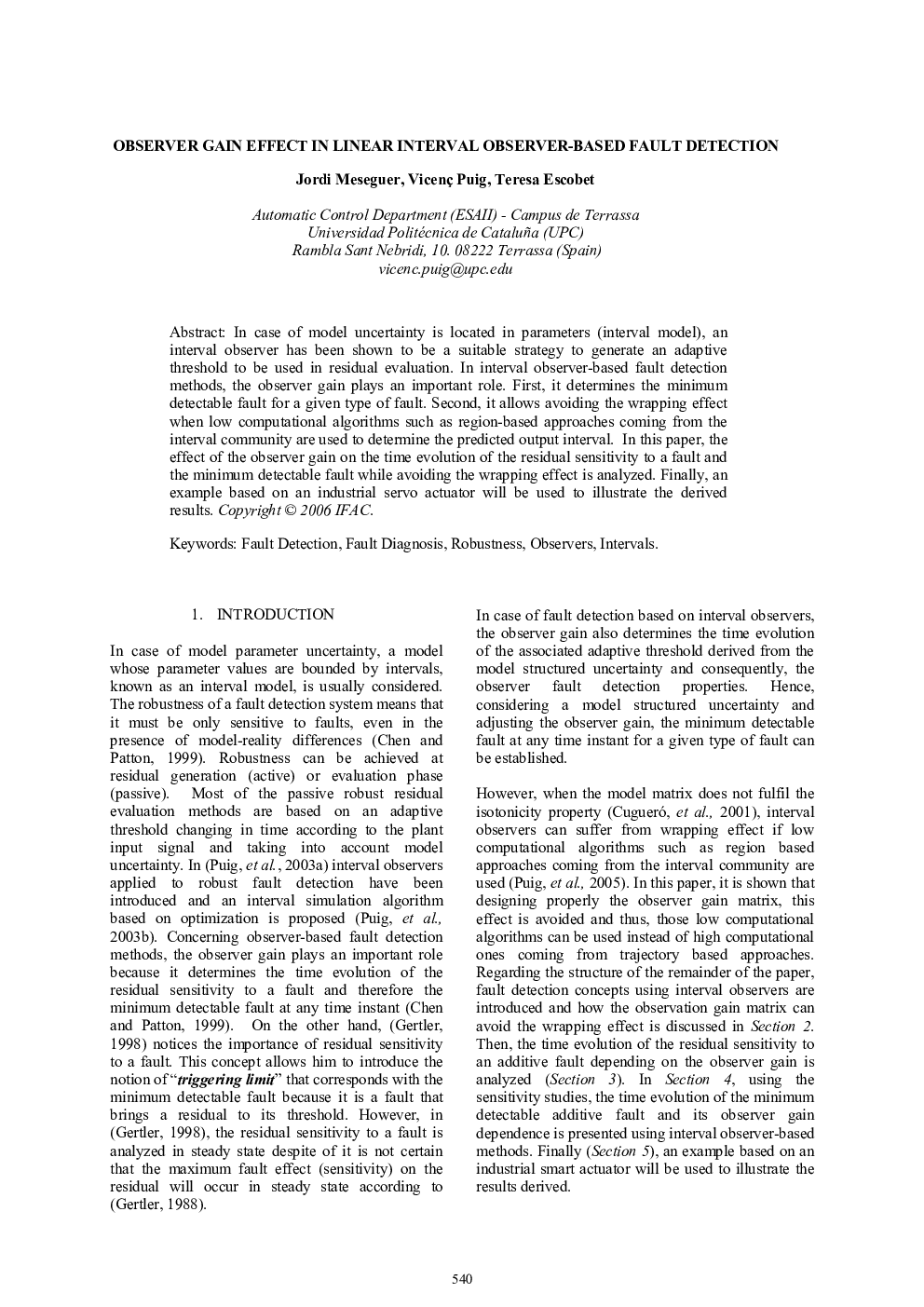| Article ID | Journal | Published Year | Pages | File Type |
|---|---|---|---|---|
| 722393 | IFAC Proceedings Volumes | 2006 | 6 Pages |
In case of model uncertainty is located in parameters (interval model), an interval observer has been shown to be a suitable strategy to generate an adaptive threshold to be used in residual evaluation. In interval observer-based fault detection methods, the observer gain plays an important role. First, it determines the minimum detectable fault for a given type of fault. Second, it allows avoiding the wrapping effect when low computational algorithms such as region-based approaches coming from the interval community are used to determine the predicted output interval. In this paper, the effect of the observer gain on the time evolution of the residual sensitivity to a fault and the minimum detectable fault while avoiding the wrapping effect is analyzed. Finally, an example based on an industrial servo actuator will be used to illustrate the derived results.
